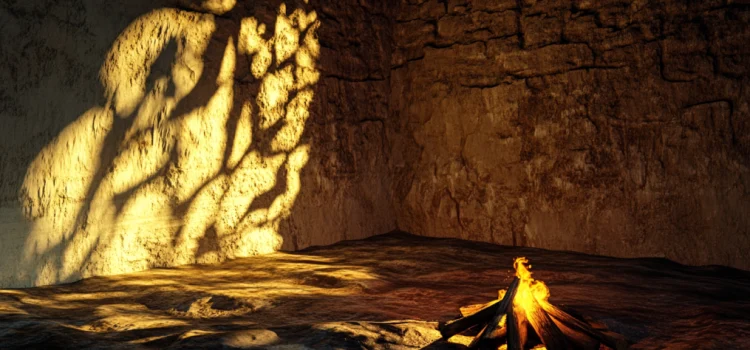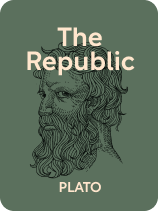

This article is an excerpt from the Shortform book guide to "The Republic" by Plato. Shortform has the world's best summaries and analyses of books you should be reading.
Like this article? Sign up for a free trial here.
What’s the true nature of reality? What if everything you perceive is just a shadow of something greater?
In Plato’s The Republic, the allegory of the cave explores these profound questions. This thought-provoking metaphor illustrates the journey from ignorance to enlightenment and the role of philosophers in society. It’s part of a series of metaphors Plato uses to explain his concept of the ideal ruler.
Keep reading to learn about one of philosophy’s most enduring allegories.
The Allegory of the Cave
In The Republic, the allegory of the cave comes third in a series of metaphors. First, we’ll look at the context and then get into the allegory and its meaning.
Socrates contends that philosophers are the most suitable leaders, and he introduces the concept of philosopher-kings: an elite group of guardians who serve as the ethical leaders and mentors of the perfect society. These rulers embody the essence of the city and exemplify a completely just way of living—the type of life Socrates must demonstrate is superior to win his argument.
In The Republic (sections V through VII), Socrates employs three metaphors to illustrate why philosophers are best suited to govern:
- The ship allegory demonstrates why philosophers possess the qualities of an exemplary leader.
- The divided line analogy explains the necessity of philosophical wisdom for an ideal ruler.
- The cave allegory depicts how a philosopher applies their knowledge in leadership.
After explaining the superiority of philosophical character and philosophical knowledge, Socrates describes how these elements combine to create an ideal ruler. He does so through the allegory of the cave, which describes the education and leadership of the ideal city’s philosopher-king.
Inside the cave, people are restrained so they permanently face the back wall. A fire is lit behind them, and various items are placed in front of it to project shadows on the wall. Because they’ve never seen anything else, the people in the cave believe these shadows are actual real objects. But one day, a man frees himself from his restraints, turns around, sees the items in front of the fire, and realizes the shadows are just images cast by them. Then, as his eyes adjust to the light, he’s able to ascend from the cave, see reflections and objects outside, and then eventually look up to see the sky. There, he’ll finally see that the sun provides the necessary light for all objects and shadows to be visible.
If he returns to the cave, his eyes will struggle to adapt to the darkness, and everyone inside will assume he’s delusional if he tries to explain what he’s seen outside. While he would prefer to spend all his time outside and see the true world, he knows he must return for the good of everyone in the cave—his community. When he does, he’ll understand the shadows far better than anyone else inside because he’s seen the objects that create them. He’ll therefore be far better suited to educating and guiding everyone else.
(Shortform note: A simpler, more modern way to understand the imagery of the cave is as a movie theater. Much like the cave, a theater is a dark, enclosed space where only projections are visible. Someone who had lived their entire life chained to their seat facing the screen would only experience the world through movies. Therefore, they would assume the objects and people on screen were real and not just a projection. But if someone could exit the movie theater into the light of day, they’d be able to see that movies are just images of real objects.)
Understanding the Allegory
Combined with an understanding of the divided line, the allegory of the cave represents the role of a philosopher-king in society. In mundane society, people are focused entirely on conventional wisdom and worldly affairs like wealth and petty politics—just as people inside the cave are focused on shadows.
But those with a philosophical character find worldly affairs insufficient to explain the nature of the world around them. In the ideal city, they’re selected from the protectors and educated to become philosophers. This education mirrors the ascent from the cave, going from basic, universal education (illusions and objects) to mathematical reasoning, philosophical reasoning, and the form of the good (the sky and sun). This process lasts several decades, allowing the philosopher-king’s mind to adjust to this new understanding of reality just as the cave man’s eyes adjusted to the light.
Because of their love of knowledge, the philosopher-kings will want to keep studying the forms indefinitely. However, they’ll recognize that they must rule because they’re best suited to the task—refusing would be placing their desires over the well-being of the city as a whole. Therefore, they’ll “descend” back into the cave to educate those still within it about the best, most moral ways to live their lives and run society.
(Shortform note: The themes presented in the cave and divided line of ascent and descent are central to The Republic and appear throughout the work. Descent or down represents movement toward the more worldly and less real, while ascent or up represents movement toward the real and abstract. For example, in the first line of the dialogue, Socrates says he went down to the Piraeus. The Piraeus was the port of Athens, a location associated with commerce and wealth. Therefore, Socrates is essentially descending into common society to educate people there about the true nature of reality—in other words, he descends back into the cave to tell those within it about the outside world.)

———End of Preview———
Like what you just read? Read the rest of the world's best book summary and analysis of Plato's "The Republic" at Shortform.
Here's what you'll find in our full The Republic summary:
- Plato’s concept of justice
- Why living a moral life is good for its own sake
- How later philosophers interpreted and responded to the ideas in The Republic






